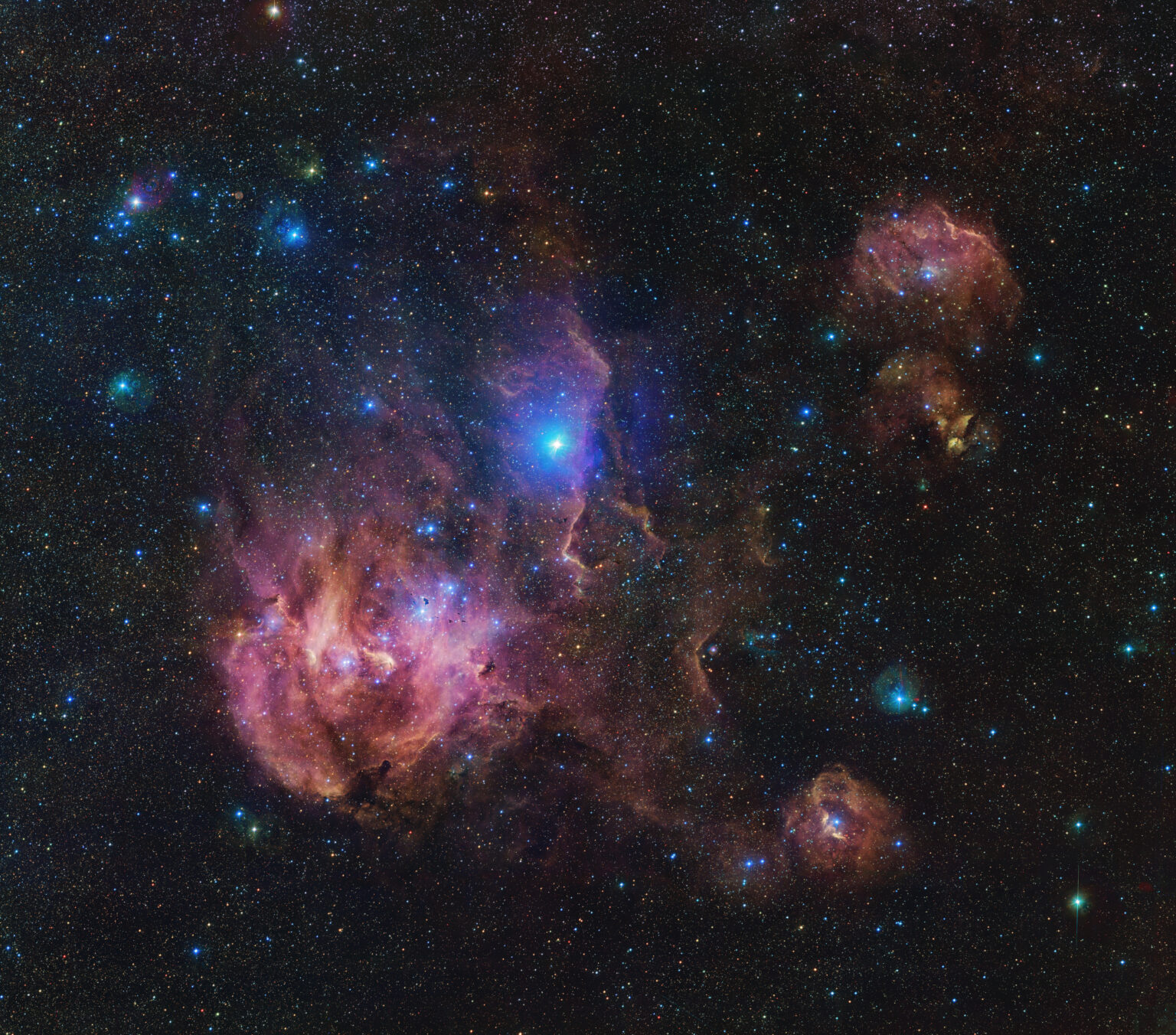The European Southern Observatory has published a 1.5-gigapixel image taken by the VLT Survey Telescope (VST). It depicts a nebula known unofficially as the Running Chicken.

The image shows a large stellar region located in the Centauri constellation at a distance of about 6,500 light-years from Earth. Newborn stars in this region emit powerful radiation that causes the surrounding hydrogen gas to glow pink.
The nebula consists of several regions, each of which can be seen in the VST image, covering an area of sky about the size of 25 full moons. The brightest region of the nebula is called IC 2948. The image shows gas and dust plumes enveloping it.
In the center of the image, marked by a bright vertical pillar-like structure, is another area called IC 2944. Against its background, the bright star Lambda Centauri stands out. But in fact, it is much closer to us than the nebula itself.
However, IC 2948 and IC 2944 themselves also have plenty of bright stars. The powerful radiation emanating from them gradually destroys the gas and dust clouds surrounding them. However, some areas of the nebula, known as Bok globules, are able to withstand the brutal bombardment of ultraviolet radiation. If you enlarge the image, you can see them. They are small, dark, and dense clusters of dust and gas scattered throughout the nebula. In the future, these formations may become the germs for new stars.
Earlier, we told you about how NASA captured a Christmas tree in space.
Based on materials from https://www.eso.org

